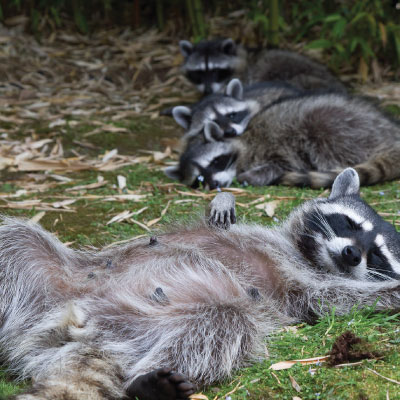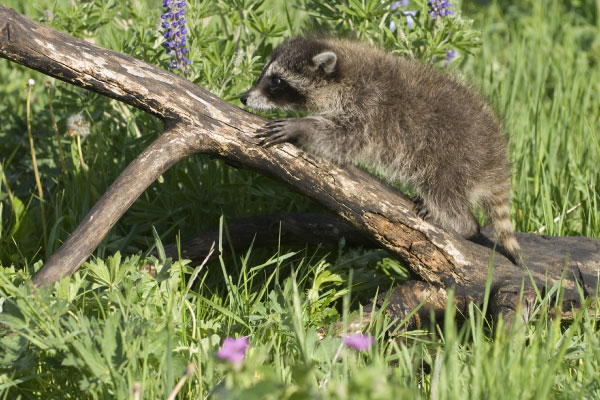 Raccoons are versatile mammals that eat just about anything and live just about anywhere. They are bold and rather curious, so it’s no surprise they don't have an issue raiding your trash can or garden. While they can be considered a nuisance, raccoons are important players in the ecosystem, keeping wherever they live clean and healthy.
Raccoons are versatile mammals that eat just about anything and live just about anywhere. They are bold and rather curious, so it’s no surprise they don't have an issue raiding your trash can or garden. While they can be considered a nuisance, raccoons are important players in the ecosystem, keeping wherever they live clean and healthy.
What do they eat… besides your trash? Raccoons are omnivores, grabbing their food from the water and land. With their little paws, which have a slight resemblance to human hands, they grab fish, crawfish, frogs, and other creatures from the water. When they are on land, they hunt for rats, mice, snakes, and insects, eating a lot of the “pests” we don’t want in and around our homes. Raccoons not only eat meat though, they also snack on berries and nuts and in turn spread those seeds through excretion. Just as bees spread pollen around, raccoons spread those seeds and nuts. In addition to all of the meals mentioned above, racoons feast on dead and decaying animals, cleaning up the environment they are present in. Surprisingly, raccoons are very clean when it comes to their food, rinsing it in available water sources.
Raccoons are a very adaptable animal, living in lots of different climates and habitats. They can be found in North and South America, Europe, and Japan! Their dens can be found in caves or trees, or even barns or abandoned cars. While they are wide-ranging, one place they will not be found is in desert-like areas.

Raccoons are nocturnal, sleeping for longer periods of time during the winter. They do not hibernate, rather they sleep while they live off of stored fat, losing about 50% of their body fat during the wintertime. Raccoons typically mate between February and March and have their kits in the early summer. The litters are usually 3-6 babies and the male raccoons do not take part in raising the litter. The kits are born blind, with hair and they don’t reach independence until they’re about a year old.
While raccoons do play an important role in the ecosystem, they still pose threats to humans because they can carry diseases. If you ever see raccoons hanging around your home, it’s best to leave them alone! If you’re really worried about their presence because of livestock or pets, call a pest removal company that will safely remove the raccoons.
Raccoons are key animals in our ecosystem that generally do more good than more harm. It may be a nuisance to have them digging around in your trash cans, but chances are they’re actually helping manage the snakes, mice, and other critters around your homes.
Caroline McGann is a Winter Naturalist at Walking Mountains Science Center and a recent graduate from the University of North Carolina Wilmington, where she studied marine biology.
Sources:
https://www.nationalgeographic.com/animals/mammals/r/raccoon/#close
https://newportbay.org/wildlife/mammals/more-on-raccoons/
https://www.livescience.com/52655-raccoons.html
https://www.raccooncontrol.ca/blog/can-raccoons-be-beneficial-to-our-properties-at-all/
https://www.treehugger.com/varmints-that-we-should-embrace-4869313









